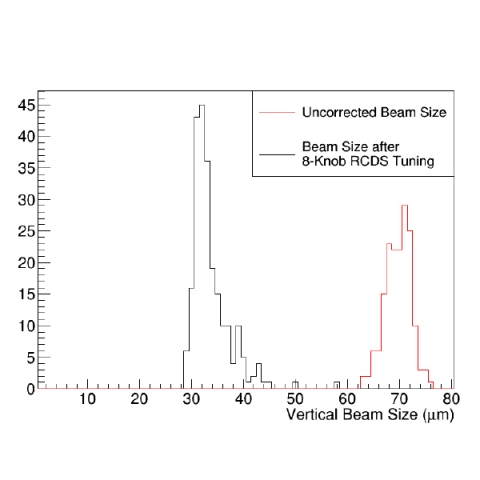Online storage ring optimization using dimension-reduction and genetic algorithms
W. F. Bergan, I. V. Bazarov, C. J. R. Duncan, D. B. Liarte, D. L. Rubin, and J. P. Sethna
Particle accelerators are complex machines with a large number tunable parameters, complicating searches for optimal machine conditions. However, we have found that these "bare" parameters can often be grouped into new "eigenparameters," such that the tuning ability of all the original parameters is concentrated in only a few eigenparameters. At the Cornell Electron Storage Ring (CESR), we have reduced the 81 magnet strengths useful for minimizing the vertical beam size into 8 eigenparameters, and experimentally demonstrated their ability to reduce the beam size when used by various optimization algorithms. This dimension-reduction permits faster tuning of accelerators.
Relation to CBB goals:
Our results advance the CBB goal of delivering better control of beams in particle storage rings.
Potential applications:
X-ray light-sources, such as CESR, stand to benefit by using the techniques we developed to reduce time spent tuning their machines, making more time to do X-ray science.
DOI:

